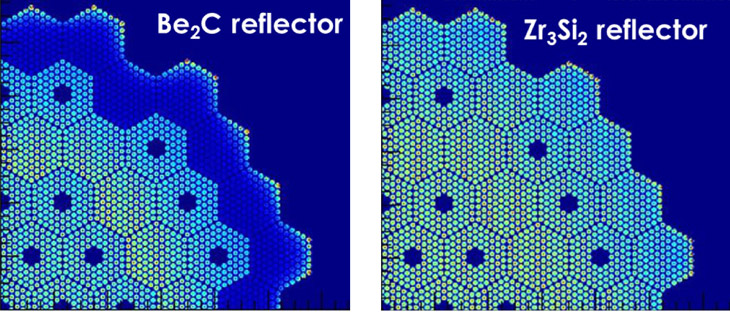High Neutron Reflector Materials

Advanced fast reactors like General Atomics Electromagnetic Systems’ Energy Multiplier Module Energy Multiplier Module (EM2™) require a variety of new technologies to reach their potential, spanning everything from how their energy is turned into useable electricity to the design of mechanical elements around the core, such as their neutron reflectors.
Neutron reflectors are a vital component of nuclear reactors and are one of several elements used to control the physics of the fission reaction in the uranium fuel. Reflectors smooth the neutron flux by scattering back neutrons that would otherwise escape the core, promoting a more consistent fuel burn and more efficient operation. Light-water reactors typically use reflectors made of graphite or beryllium.
Because fast reactors rely on a different type of fission reaction than LWRs do, they require different reflector materials. Graphite and beryllium act as neutron moderators, reducing neutron energy that must be kept high. Fast reactors also have smaller cores with higher power densities, placing greater demands on the reflector material. Liquid metal fast reactors, which operate at around 500°C, have typically used reflectors made of heavy metals such as steel, lead, or natural uranium.
Fast gas reactors like EM2™ operate above 800°C, requiring reflector materials that can tolerate even high temperatures and higher neutron fluences. To meet this need, GA-EMS is developing a zirconium silicide (Zr3Si2 ) reflector to improve the neutron economy and reduce power peaking factors for EM2™ and other fast reactors.

Computer simulations suggest a reflector composed of zirconium silicide can resolve power peaking issues in fast reactors and significantly improve core performance.
Zr3Si2 is an ideal reflector for high-temperature fast gas reactors because it has a melting point above 2000°C and remains phase-stable up to 1800°C. Initial experiments with test blocks have shown promising results and stability.